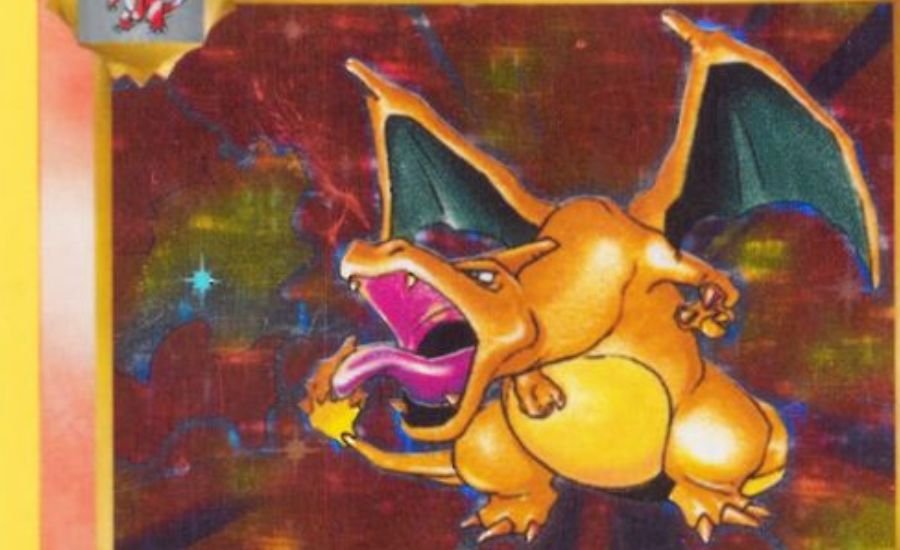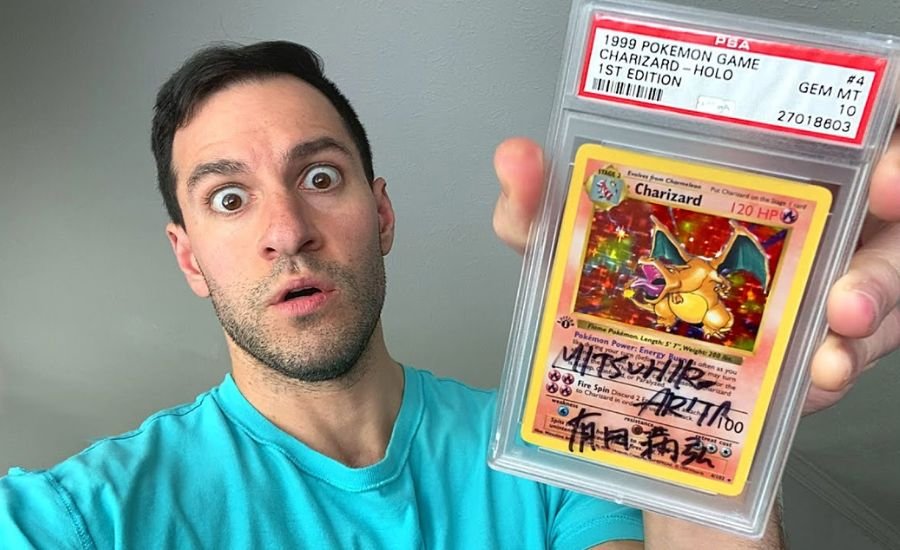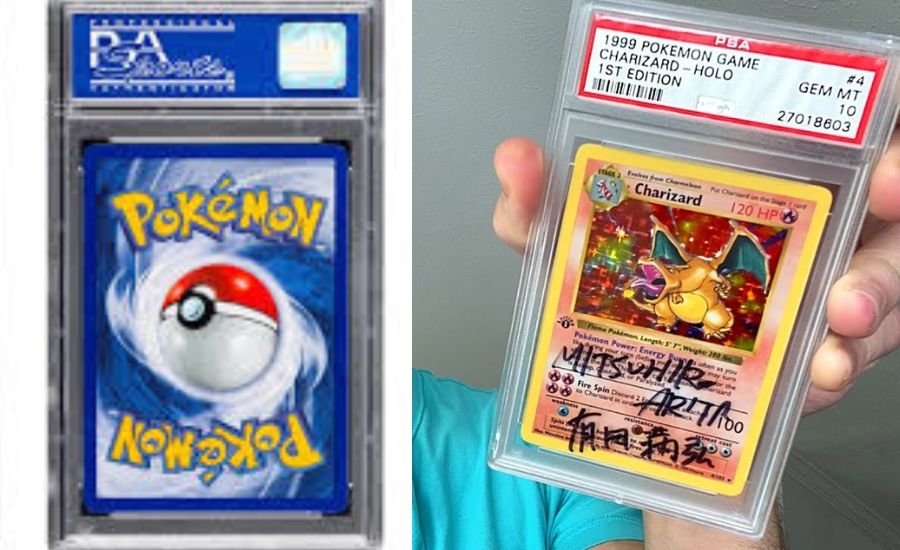The Charizard First Edition card is one of the most sought-after Pokémon cards in the world. Collectors and investors alike dream of owning this rare piece of history. Whether you’re new to Pokémon card collecting or a seasoned veteran, this guide will help you understand everything about the Charizard First Edition, including its value, rarity, and how to authenticate it.
What is Charizard First Edition?
The Charizard First Edition is a card from the original 1999 Pokémon Base Set. It features the iconic Charizard, a Fire-type Pokémon, with a stunning design and powerful moves. The first edition cards were printed in limited quantities, making them incredibly valuable today.
Why is Charizard First Edition So Valuable?
Several factors make the Charizard First Edition card highly valuable:
- Limited Print Run – Only a small number of first edition cards were produced.
- Nostalgia – Many collectors grew up with Pokémon and now seek to own a piece of their childhood.
- Popularity of Charizard – As one of the most beloved Pokémon, Charizard has always been in demand.
- Investment Potential – The card’s value has steadily increased over the years, making it a great investment.
The History of Charizard First Edition

The Charizard First Edition card was part of the first Pokémon Trading Card Game (TCG) set released in the United States in 1999. Wizards of the Coast, the company responsible for printing the English versions of Pokémon cards, released this set in limited quantities. The first edition print run was the earliest batch produced, making these cards much rarer than later prints.
Shortly after the first edition print run, the “shadowless” version was released. These cards lack the first edition stamp but still maintain the unique shadowless design. Finally, the unlimited edition was printed, featuring a shadow around the artwork and a larger print run, making it less valuable.
How to Identify a Charizard First Edition Card
To ensure you have a genuine Charizard First Edition card, check for these key features:
- First Edition Stamp – A black circular stamp with “1st Edition” appears on the left side of the card.
- Shadowless Design – Unlike later prints, the first edition card does not have a shadow around the character box.
- 1999 Copyright Date – The bottom of the card should read “1999 Wizards” instead of later versions.
How Much is a Charizard First Edition Worth?
The value of a Charizard First Edition card depends on its condition. Here are approximate values based on grading:
- Ungraded – $5,000 – $20,000
- PSA 7-8 – $30,000 – $100,000
- PSA 9 – $150,000 – $250,000
- PSA 10 (Gem Mint) – Over $300,000
Prices vary based on market trends and collector demand. Additionally, certain factors such as autographed copies, misprints, or special provenance (like ownership by a celebrity) can influence a card’s final price.
How to Authenticate and Grade a Charizard First Edition Card
If you own a Charizard First Edition, getting it graded can increase its value. Popular grading companies include:
- PSA (Professional Sports Authenticator)
- Beckett Grading Services (BGS)
- CGC (Certified Guaranty Company)
A professional grading company will evaluate the card’s:
- Centering – The balance of the image within the card.
- Corners – Sharpness and condition of the edges.
- Edges – Any signs of wear or whitening.
- Surface – Scratches, print lines, or damage.
A PSA 10 (Gem Mint) grade is the highest possible rating and significantly increases a card’s resale value.
Where to Buy a Charizard First Edition Card
If you’re looking to purchase a Charizard First Edition, consider these options:
- Online Marketplaces – eBay, Heritage Auctions, and Goldin Auctions.
- Card Shops – Local trading card stores sometimes have high-value Pokémon cards.
- Collectors’ Events – Pokémon conventions and card trading events.
- Private Sales – Some collectors prefer to trade or sell directly through social media or private groups.
How to Spot Fake Charizard First Edition Cards
Due to its high value, counterfeit Charizard First Edition cards exist. Here’s how to spot a fake:
- Check the Weight – Real Pokémon cards have a distinct weight and feel; counterfeits may feel too light or too thick.
- Examine the Print Quality – Genuine cards have sharp text and vibrant colors, while fakes may look blurry.
- Perform the Light Test – Hold the card up to a bright light; real Pokémon cards have a specific level of transparency.
- Verify the Font and Symbols – Fake cards often have incorrect fonts or misaligned symbols.
Tips for Selling a Charizard First Edition
If you own a Charizard First Edition and want to sell it, follow these steps:
- Get it Graded – A graded card sells for a higher price.
- Use Trusted Platforms – Sell on eBay, PWCC, or a reputable auction house.
- Provide High-Quality Photos – Show clear images of the card’s front and back.
- Research Market Prices – Check recent sales to determine a fair price.
- Consider Auctions for Rare Grades – If you have a PSA 9 or PSA 10, selling through an auction house may fetch higher bids.
Investing in Charizard First Edition: Is It Worth It?

Investing in a Charizard First Edition can be highly profitable, but it’s important to consider these factors:
- Market Trends – The Pokémon card market fluctuates; stay updated on trends.
- Card Condition – Higher grades yield better returns.
- Long-Term Holding vs. Quick Flip – Some investors hold for decades, while others flip cards quickly.
- Authentication and Security – Ensure the card is genuine and store it in protective cases.
Many investors compare Pokémon cards to rare art or sports memorabilia, believing they will continue to appreciate in value.
Conclusion
The Charizard First Edition is a legendary Pokémon card that continues to rise in value. Whether you’re a collector, investor, or Pokémon fan, owning this card is a prized achievement. By understanding its history, value, and how to authenticate it, you can make informed decisions and potentially profit from this iconic collectible.
With the right knowledge and resources, you can buy, sell, or invest in a Charizard First Edition with confidence, making it a valuable addition to any collection.
FAQs
Q: How can I tell if my Charizard First Edition card is real?
A: Check for the 1st Edition stamp, shadowless design, and 1999 Wizards copyright at the bottom. Also, verify the font, color quality, and perform the light test.
Q: What is the highest price ever paid for a Charizard First Edition card?
A: The highest recorded sale was over $400,000 for a PSA 10 graded Charizard First Edition card.
Q: Where can I sell my Charizard First Edition card?
A: You can sell it on eBay, Heritage Auctions, PWCC, or through private collectors and Pokémon trading groups.
Q: How much is a Charizard First Edition worth in poor condition?
A: Even in poor condition, it can sell for $5,000 to $20,000, but higher grades command much higher prices.
Q: Why is Charizard First Edition so rare?
A: It had a limited print run in 1999, and many were played with rather than preserved, making mint-condition cards very rare.
Q: Should I get my Charizard First Edition card graded?
A: Yes, grading increases its value and authenticity. PSA, Beckett, and CGC are trusted grading companies.
Q: What is the best way to protect my Charizard First Edition card?
A: Store it in a PSA slab, hard case, or a toploader with a protective sleeve to prevent damage.
Don’t Miss Out: Tech-Organizer
